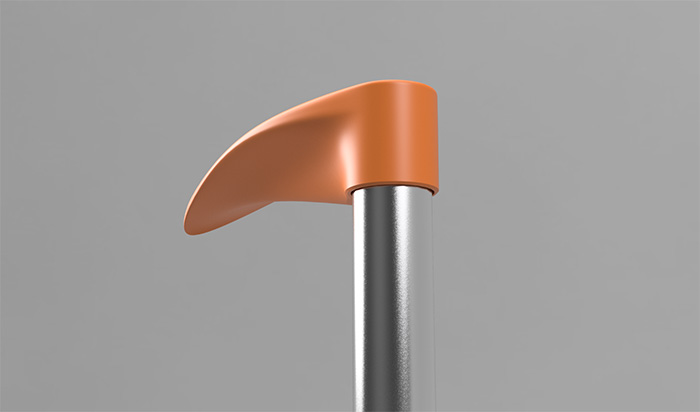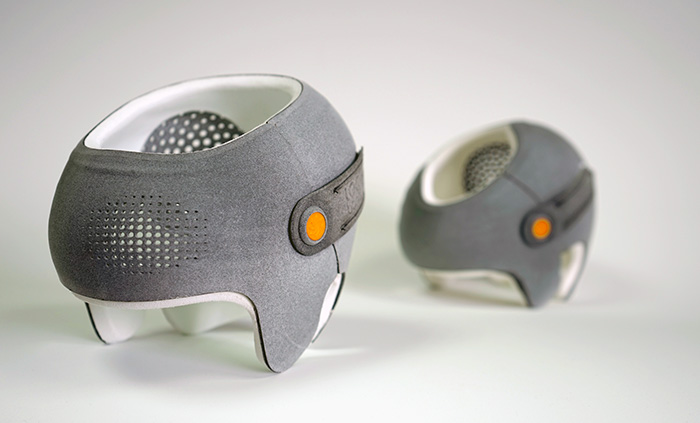3D printing refers to the process of building a three-dimensional object from a digital file. It was originally used for fast prototyping of industrial products and designs. By applying 3D printing techniques to orthotics, we can achieve a number of benefits for our patients.
Because 3D printing works by building an orthotic layer by layer, it allows us our orthotists far more flexibility in designing and manufacturing innovative and bespoke orthotics. This means that we can achieve treatment for our patients that are simply not possible within traditional manufacturing techniques.
For example, we can create an orthosis that has very precise variations in degrees of thickness and pressure, for maximum therapeutic impact. At the same time, we can manufacture orthoses that are lighter and cooler, and therefore more comfortable to wear.

We are developing some exciting new products at LOC that harness state-of-the-art design benefits thanks to additive manufacturing (3D printing).
Having purchased our first Markforged Mark II printer for small in-house engineering developments, we can now print continuous carbon fibre, kevlar and high tensile glass fibres.
This gives us greater freedom of design and engineering, whilst aiding our manufacturing team in the form of jigs, fixtures and devices for orthotic assessments.

Our in-house design team have developed the all-new LOCband-Lite based upon HP's Multijet Fusion technology (MJF). The 3D printed cranial helmet features a lightweight design thanks to the thinner wall thickness and vented meshes.
This has a number of tangible benefits for our patients: it is cooler and more comfortable to wear due to greater heat dissipation and reduced neck strain from the lightweight design.

We have the following facilities and amenities at our Kingston Upon Thames location:
We also have the Gait Laboratory for orthotics patients and Onsite Manufacturing for speedy turnarounds and adjustments whilst you wait.
We have the following facilities and amenities at our Cambridge location:
We have the following facilities and amenities at our Bristol location:
For more information, visit Litfield House Medical Centre.
LOC’s clinic is based in the University of Salford’s Podiatry Department and provides treatments for orthotics, scoliosis, pectus deformities, positional plagiocephaly and club foot.
It is also the base for LOC’s northern OSKAR clinic which is run by Sam Walmsley, clinical director of LOC, in conjunction with Elaine Owen MBE MSc SRP MCSP.
We have the following facilities and amenities at our Romford location:
Parking:
There is NO parking directly outside the clinic. These spaces are reserved for residents.
The nearest parking can be found at Billet Lane public pay & display opposite Queens Theatre, a 2-minute walk from the clinic.
Click here for more information about Best Health Clinic
Due to COVID-19, we have had to temporarily close the Salford clinic and are operating out of another clinic in Bolton.
508 Blackburn Rd,
Astley Bridge,
Bolton
BL1 8NW
For more information, please visit The Good Health Centre

We are proud to announce the launch of our latest innovation in non-surgical treatment for pectus deformities. Our new dynamic chest compressor is one of the slimmest pectus braces on the market and is designed to reshape the chest without the need for invasive surgery.

Rosie’s very severe plagiocephaly was no problem for the LOCBand Lite 3D-printed cranial remoulding helmet, going from 16mm to 2mm in just six months.

When John came to see us, his ankle was in a bad way. He had around 60mm of his tibia missing and not much if any talus present. He needed crutches to support him to walk. A gait analysis and a new bespoke carbon fibre knee ankle foot orthosis (KAFO) later and he is able to walk again without crutches.

Matilde travelled from Chile to LOC for bracing treatment for her adolescent idiopathic scoliosis. Now, nearly a year and a half since she started wearing her brace, she has achieved near-total correction of the curvature of her spine. This is her scoliosis bracing story.

After only 6 months of wearing bespoke pectus braces from The London Orthotic Consultancy, Will started to notice a visible difference in his pectus carinatum.

After trying out several scoliosis braces in Romania, Ukraine and Turkey, Iulia begins treatment with the LOC Scoliosis Brace and is already seeing results in a matter of months. Here her mum, Raluca, describes how and why they came to LOC for her treatment.

Through bracing treatment with the dynamic chest compressor, Jack has achieved 90% correction in his pectus carinatum after only two months. Here, mum describes Jack's non-surgical treatment journey.

Baby Iyad's plagiocephaly was classed as 'severe' yet was treated in just 3 months of wearing the LOCband Lite helmet.